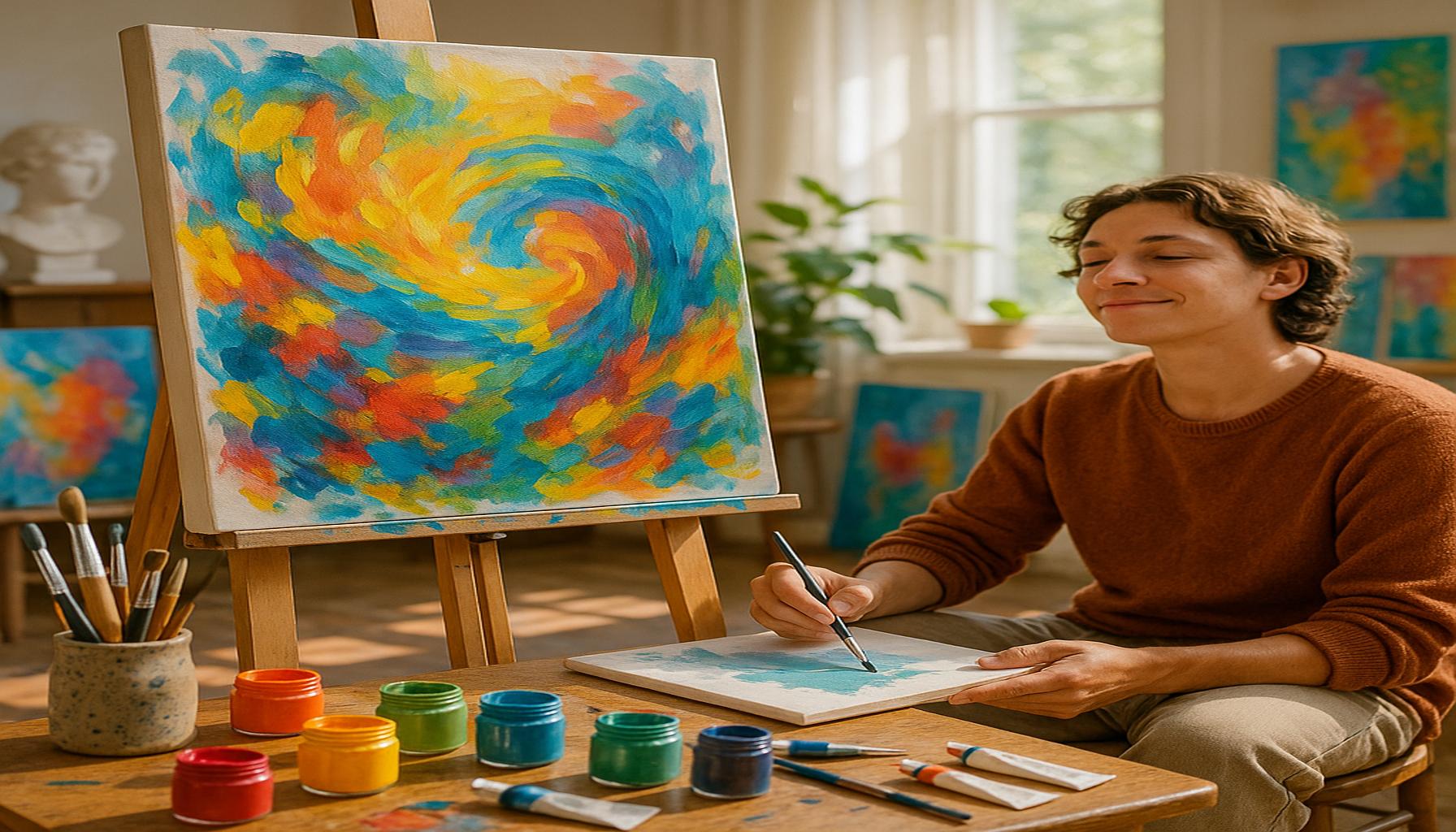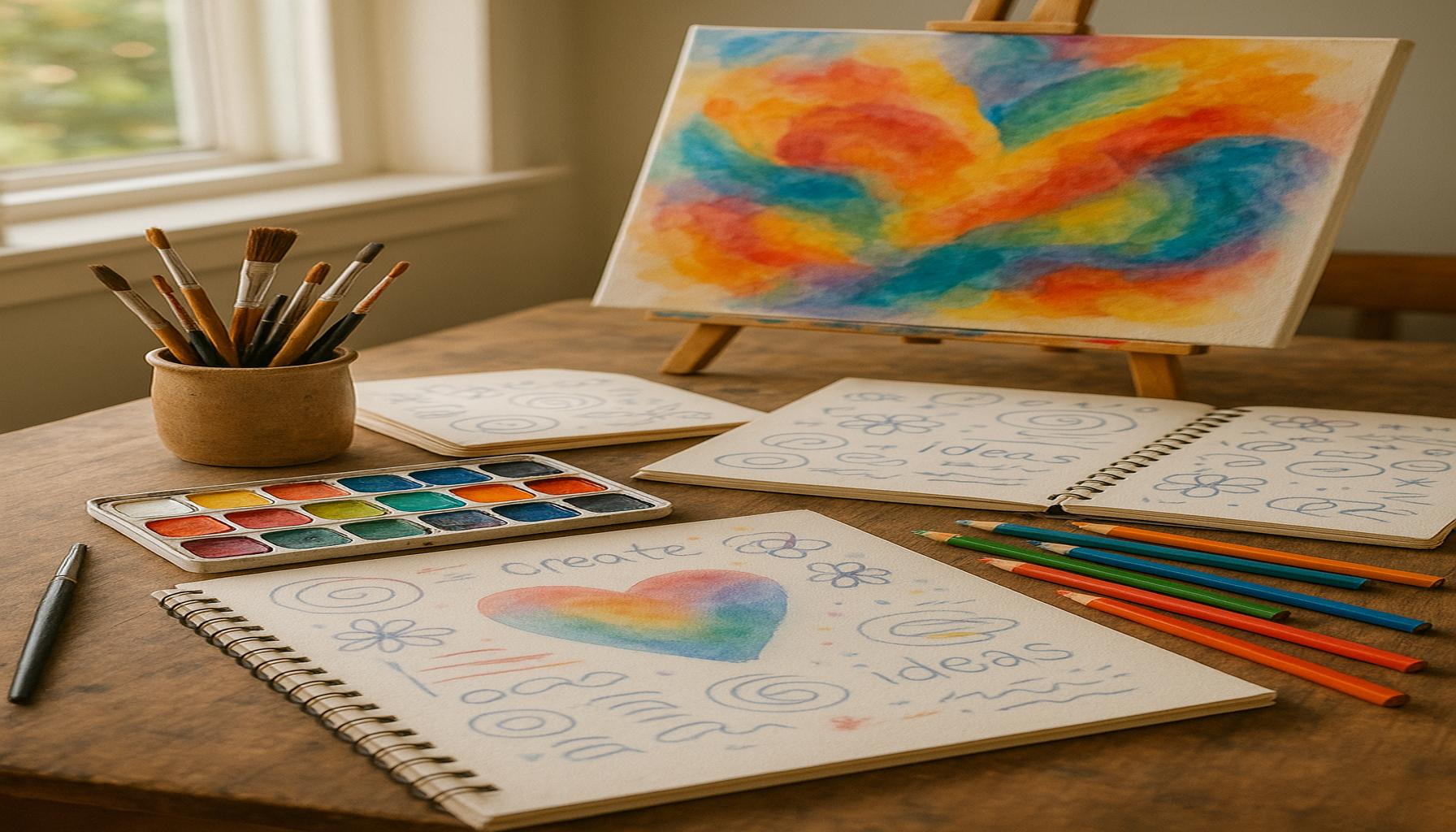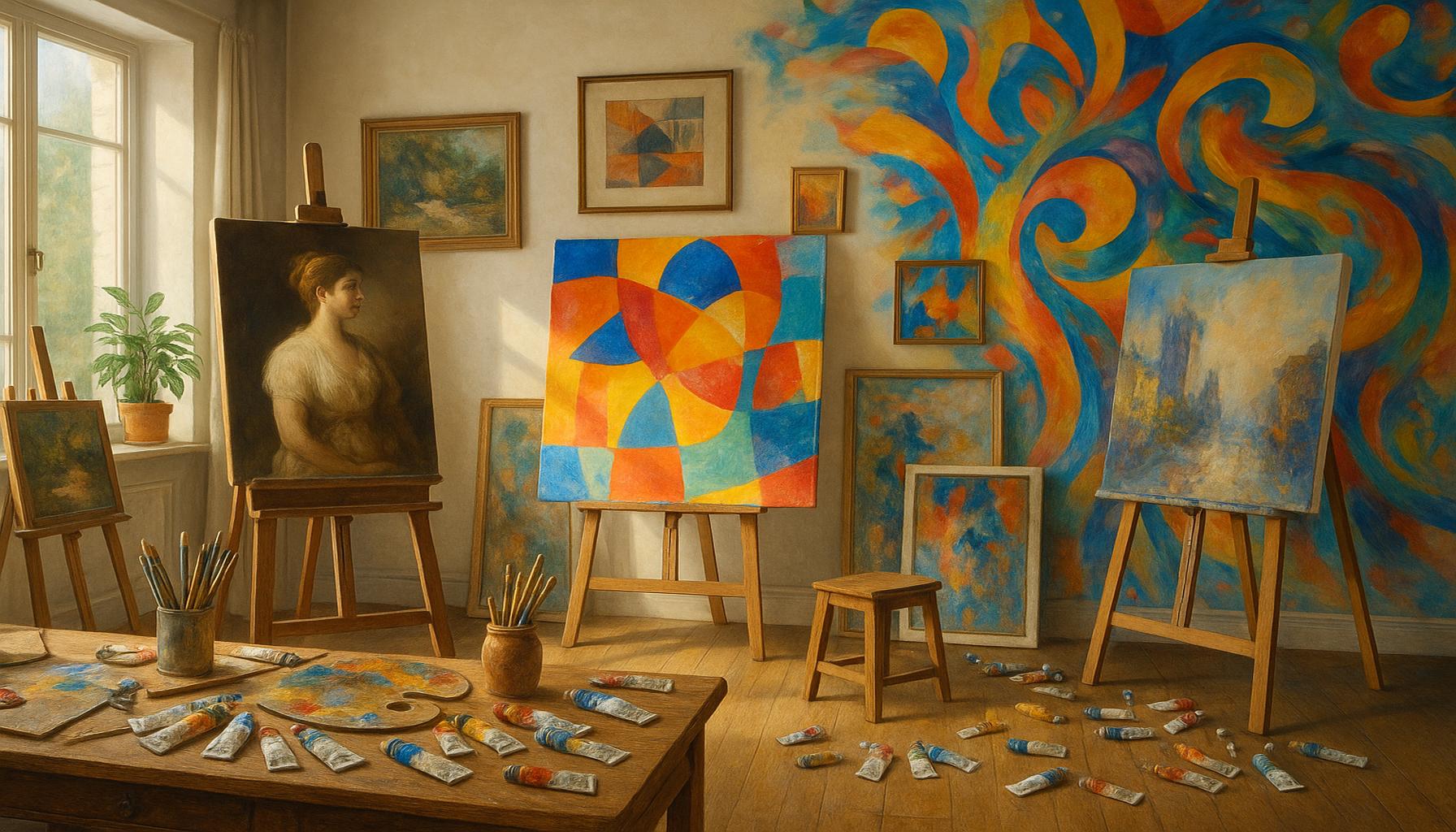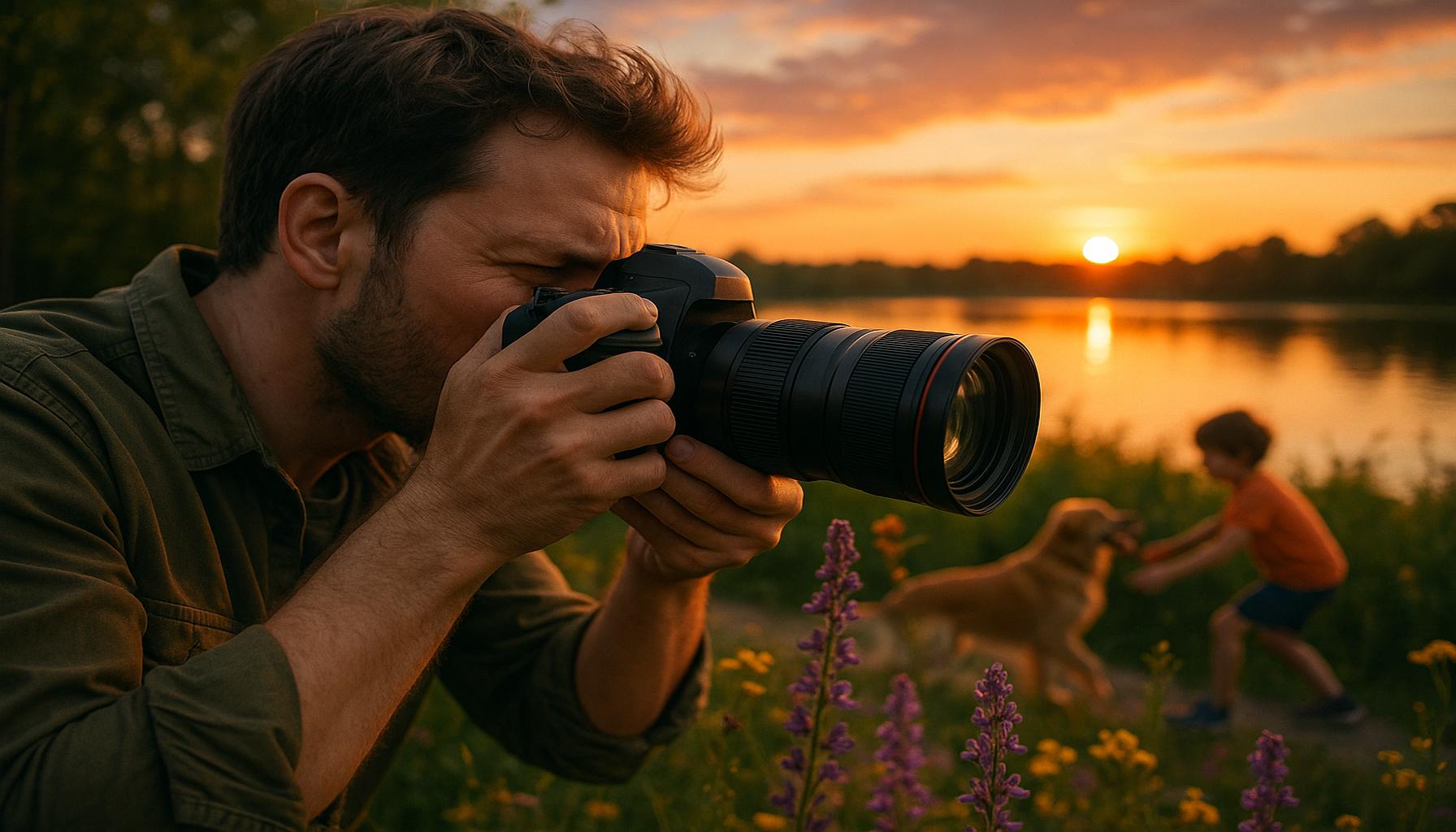The Influence of Art on Mental Health: How Creating Can Transform Life

The Healing Power of Artistic Expression
Artistic expression has long been recognized as a powerful tool for communication, able to bridge cultural gaps and connect people through common experiences. Beyond its aesthetic appeal, the profound effects of art on mental health are becoming increasingly accepted and understood within clinical and academic circles. The conscious act of creating art engages both the mind and body, helping individuals confront their emotions and promote healing.
Engagement in artistic activities has been shown in numerous studies to foster significant improvements in mental health. For instance:
- Reduction of Stress: Engaging in creative endeavors has been found to lower levels of cortisol, the hormone linked to stress. Simple activities like doodling or painting can create a meditative state, allowing the individual to escape daily pressures, leading to a more relaxed state of mind.
- Enhanced Mood: Participating in art acts as a natural mood booster due to the increase in dopamine release, a neurotransmitter tied to feelings of pleasure. For example, a person painting landscapes may find that connecting with nature through their brush helps elevate their spirits.
- Improved Self-Esteem: Completing a creative project instills a sense of accomplishment. Whether it’s finishing a scrapbook or crafting a piece of pottery, these successes contribute to a positive self-image and a sense of purpose.
In today’s fast-paced world, where individuals often battle emotional upheaval, art can become a safe haven. Activities like painting, music, writing, or dance enable people to express complex feelings that words may fail to articulate, thus aiding in their healing journey. Consider how many people turn to journaling as a means to process grief or anxiety; this practice is a reflection of the intrinsic relationship between creativity and emotional expression.
Recognizing the therapeutic benefits of art, various programs have integrated it into mental health treatment across the United States. Such initiatives include:
- Art Therapy: This personalized approach involves guided sessions where trained therapists assist clients in exploring their emotions through different art forms. Studies indicate that individuals with PTSD or anxiety disorders often show reduced symptoms after participating in art therapy.
- Community Programs: Initiatives such as those run by organizations like Art for Humanity aim to introduce art to disadvantaged neighborhoods, enhancing community engagement and providing an outlet for self-expression among participants.
- Workshops: Many local community centers host workshops focusing on using art to cope with stress and mental health challenges. These classes allow individuals to connect with others facing similar struggles while exploring their creativity.
As we venture further into the relationship between art and mental wellness, it becomes evident that creating art can profoundly alter lives. This transformative process not only offers an outlet for emotions but also provides a pathway towards recovery and personal enlightenment. For those seeking a means to navigate their mental health journey, engaging in artistic activities might just be the essential step needed to reclaim their narrative.

DISCOVER MORE: Click here to dive deeper
Unpacking the Therapeutic Impact of Art
The connection between art and mental health transcends mere enjoyment; it is rooted in the profound capability of creativity to cultivate healing. As the contemporary landscape of mental health treatment evolves, understanding how the arts intersect with emotional well-being becomes essential. Engaging in creative activities has been shown to provide meaningful relief from various mental health challenges, serving both as a therapeutic outlet and a pathway towards recovery.
Research has shed light on the neurological and psychological benefits derived from artistic expression. For example, participating in art activities facilitates neuroplasticity—the brain’s ability to form new connections—encouraging a shift away from negative thought patterns. This transformation is particularly crucial for individuals grappling with conditions such as depression and anxiety. Studies indicate that simply engaging with art can:
- Enhance Emotional Intelligence: Art encourages individuals to explore and articulate their feelings in new ways. Creative practices prompt participants to decode complex emotions, nurturing greater self-awareness and emotional regulation.
- Encourage Social Connections: Group art activities foster community and collaboration, allowing individuals to interact in a supportive environment. This social engagement combats feelings of loneliness often associated with mental health struggles.
- Boost Cognitive Abilities: Creating art stimulates the brain, enhancing problem-solving skills and cognitive flexibility. As individuals immerse themselves in creative tasks, they can unlock new perspectives and insights, empowering personal growth.
In recent years, the field of art therapy has gained momentum, integrating creative processes directly into mental health care. Art therapists utilize various mediums to work with clients, enabling them to express their feelings, explore trauma, and reclaim agency over their narratives. The process can be especially beneficial for individuals who find it challenging to verbalize their thoughts. A study published in the American Journal of Art Therapy noted that participants reported reduced symptoms of anxiety and depression after undergoing structured art therapy sessions.
Additionally, the use of art in community support programs plays a pivotal role in promoting mental wellness. Several organizations across the United States have established initiatives aimed at enhancing accessibility to artistic expression. For instance, cultural institutions are increasingly hosting workshops designed for marginalized populations, introducing them to mediums ranging from painting to music. These community initiatives serve not just to foster creativity but also to promote resilience and empowerment among participants.
As we strive to comprehend the profound influence of art on mental health, it is clear that engaging in creative practices can yield transformative life changes. Art goes beyond mere aesthetics; it holds the potential to unlock the depths of our psyche, allowing individuals on the path to recovery to discover their voice and reclaim their story. In understanding this dynamic, it becomes evident that tapping into one’s creativity can pave the way for mental clarity, emotional healing, and a renewed sense of purpose.
The Transformative Power of Creating Art
Creating art is not merely an act of expression; it can also be a powerful tool in improving mental health. Studies have shown that engaging in artistic activities can lead to significant emotional relief, reduce symptoms of anxiety and depression, and foster a greater sense of well-being. The act of creating allows individuals to explore their feelings, communicate their struggles, and connect with their inner selves. As individuals immerse themselves in the creative process, they often experience a state of flow— a mental zone where they lose track of time and are fully present. This state is linked to decreased levels of stress and an increase in positive emotions. Whether it’s painting, sculpting, or writing, the process encourages mindfulness and promotes a deeper connection to personal experiences. Moreover, art therapy is increasingly being utilized in clinical settings, providing a structured approach for individuals dealing with trauma or mental health issues. Through guided artistic expression, people can process complex emotions that may be difficult to verbalize. Coupled with the right professional support, creating art can lead to profound healing and personal growth.
Community and Connection Through Art
In addition to personal benefits, art allows for social interaction and community building. Group art projects can foster collaboration and support among participants, which is particularly beneficial for those grappling with isolation or loneliness. The shared experience of creating cultivates a sense of belonging and enhances social networks, critical elements in mental health recovery. Art exhibitions and community workshops create platforms for individuals to showcase their work, encouraging pride and validation. These interactions can further motivate participants, paving the way for new friendships and support systems. The importance of sharing one’s artistic journey can not only highlight personal achievements but also inspire others to explore creativity as a healing tool.The role of creativity in enhancing mental health is vast and growing. For those who may not consider themselves ‘artistic,’ it is essential to recognize that art is not confined to conventional standards— it exists as a personal pathway to self-discovery and healing. By integrating artistic endeavors into daily life, individuals can embark on a transformative journey toward improved mental well-being.
| Advantages of Artistic Creation | Impact on Mental Health |
|---|---|
| Emotional Expression | Facilitates communication of complex feelings |
| Stress Reduction | Promotes mindfulness and relaxation techniques |
| Community Engagement | Fosters connections and a sense of belonging |
| Increased Self-Esteem | Encourages personal achievements and validation |
Engaging in creative activities not only enhances personal well-being but also strengthens community ties, making it an invaluable practice in the promotion of mental health.
EXPLORE MORE: Click here to discover your unique writing voice
The Role of Art in Fostering Resilience and Personal Growth
Art’s influence on mental health extends beyond immediate therapeutic benefits; it plays a crucial role in fostering resilience and empowering individuals to navigate life’s complexities. Engaging in creative practices can serve as a form of self-discovery, allowing participants to confront fears, embrace vulnerability, and cultivate coping skills. The act of creating becomes not only a refuge but also a transformative process that engenders a sense of agency over one’s narrative.
A notable example of art’s impact on personal growth can be observed in the practice of expressive arts therapy. This multifaceted approach integrates various forms of artistic expression—such as music, dance, and drama—encouraging participants to explore their emotions through alternative mediums. Research indicates that engaging in expressive arts activities significantly reduces stress levels and enhances overall psychological well-being. For instance, a study conducted by the University of Florida found that participants who engaged in expressive arts showed marked improvements in self-esteem and emotional resilience over a series of workshops.
Moreover, art serves as a powerful tool for self-reflection, helping individuals to analyze personal experiences and connect with deeper meanings within their lives. Journaling, a simple yet profound form of art, allows individuals to externalize their thoughts and feelings, providing clarity and insight. The typical process of putting pen to paper can lead to enhanced emotional processing, enabling participants to make sense of complexities that may otherwise feel overwhelming. A report in the Journal of Psychosomatic Research highlighted that individuals who regularly engaged in expressive writing experienced reductions in anxiety and depressive symptoms, showcasing the interconnectedness between creativity and mental wellness.
Through art, individuals can also find a sense of community and shared experience. Organized art programs in urban areas, such as community murals or collaborative installations, bring residents together, fostering dialogue and collective healing. These initiatives, often spearheaded by non-profit organizations, serve as a reminder that creativity can bridge divides, allowing participants to connect on levels beyond words. For instance, projects like “The Mural Project” in Philadelphia have not only beautified neighborhoods but have also created forums for storytelling and healing among community members, demonstrating art’s ability to nurture social cohesion in times of collective trauma.
In educational settings, creative arts programs focusing on mental health awareness have increasingly gained traction. Schools across the United States are implementing arts-based curricula that empower students to address emotional wellbeing while nurturing creativity. Programs focused on the arts in education have shown positive outcomes; according to a study from the National Endowment for the Arts, students engaged in arts learning have demonstrated increased motivation, emotional resilience, and academic performance, blending personal development with artistic exploration.
These examples illuminate art’s transformative power, not only as a therapeutic tool but as a catalyst for resilience, growth, and community connection. Whether it is through individual creative ventures or collaborative communal projects, the act of creating facilitates essential dialogues about mental health, encouraging individuals to embrace their authentic selves while forging connections with others in their journey. The profound effects of art on mental health underscore its significance as a vital component in the collective pursuit of emotional well-being and recovery, illuminating paths toward healing that are as diverse and varied as the art itself.
DIVE DEEPER: Click here to discover the art of photography
Conclusion: Embracing Creativity for Mental Wellness
In summary, the profound connection between art and mental health is a testament to the transformative power of creativity. Engaging in artistic practices not only nurtures emotional resilience but also fosters self-discovery and communal healing. As we’ve explored, methods such as expressive arts therapy, journaling, and community art projects play integral roles in enhancing well-being, illustrating how the act of creating can serve as both an outlet for expression and a pathway to recovery.
Moreover, the integration of the arts into educational settings underscores the importance of fostering emotional intelligence as a foundational aspect of learning. By prioritizing creative engagement, schools can equip students with the tools necessary to navigate life’s challenges, ultimately leading to improved academic performance and emotional growth. As evidenced by studies from sources like the National Endowment for the Arts, it is clear that involvement in arts programming can yield significant benefits that resonate far beyond the canvas or stage.
As we move forward, it is essential to continue advocating for the inclusion of art in mental health initiatives and to dismantle the stigma surrounding mental health discussions. The relationships formed through artistic expression promote understanding and solidarity, enabling individuals to share their stories and experiences with authenticity. Ultimately, the arts invite us to engage with our feelings and each other in profound ways, reminding us that creativity holds the potential not just to heal, but to empower and uplift us all. Therefore, let us explore and embrace the myriad ways in which art can enrich our lives and transform our mental health.


